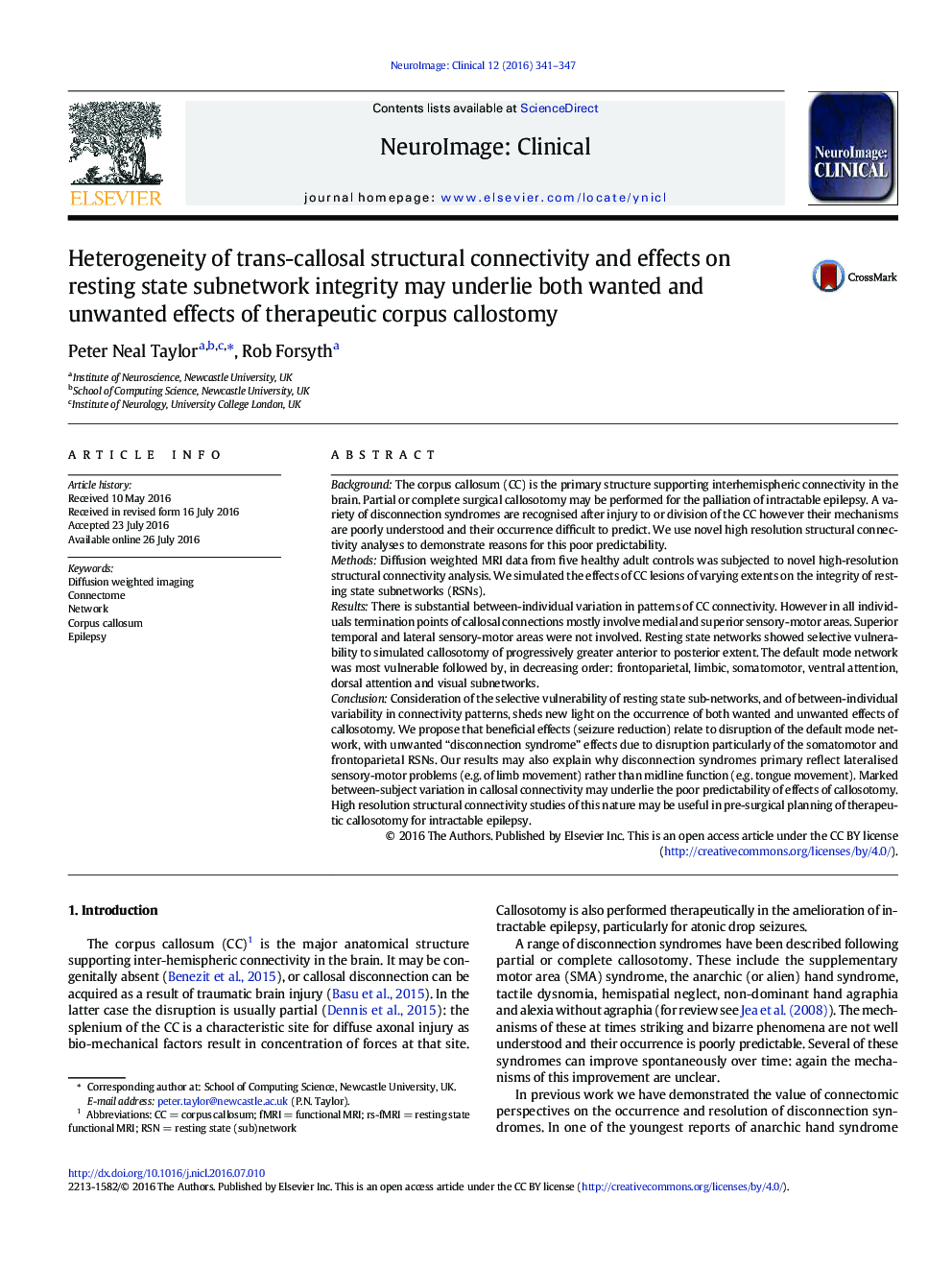| کد مقاله | کد نشریه | سال انتشار | مقاله انگلیسی | نسخه تمام متن |
|---|---|---|---|---|
| 3074822 | 1580955 | 2016 | 7 صفحه PDF | دانلود رایگان |
• Corpus callosum (CC) damage can result in many, varied effects.
• Using diffusion MRI we show hypothesized termination points of CC connections.
• Unwanted effects such as sensory-motor deficits are predicted.
• We investigate, with selective lesioning, wanted effects for epilepsy surgery.
• Substantial between-subject differences may explain the varied effects of CC injury.
BackgroundThe corpus callosum (CC) is the primary structure supporting interhemispheric connectivity in the brain. Partial or complete surgical callosotomy may be performed for the palliation of intractable epilepsy. A variety of disconnection syndromes are recognised after injury to or division of the CC however their mechanisms are poorly understood and their occurrence difficult to predict. We use novel high resolution structural connectivity analyses to demonstrate reasons for this poor predictability.MethodsDiffusion weighted MRI data from five healthy adult controls was subjected to novel high-resolution structural connectivity analysis. We simulated the effects of CC lesions of varying extents on the integrity of resting state subnetworks (RSNs).ResultsThere is substantial between-individual variation in patterns of CC connectivity. However in all individuals termination points of callosal connections mostly involve medial and superior sensory-motor areas. Superior temporal and lateral sensory-motor areas were not involved. Resting state networks showed selective vulnerability to simulated callosotomy of progressively greater anterior to posterior extent. The default mode network was most vulnerable followed by, in decreasing order: frontoparietal, limbic, somatomotor, ventral attention, dorsal attention and visual subnetworks.ConclusionConsideration of the selective vulnerability of resting state sub-networks, and of between-individual variability in connectivity patterns, sheds new light on the occurrence of both wanted and unwanted effects of callosotomy. We propose that beneficial effects (seizure reduction) relate to disruption of the default mode network, with unwanted “disconnection syndrome” effects due to disruption particularly of the somatomotor and frontoparietal RSNs. Our results may also explain why disconnection syndromes primary reflect lateralised sensory-motor problems (e.g. of limb movement) rather than midline function (e.g. tongue movement). Marked between-subject variation in callosal connectivity may underlie the poor predictability of effects of callosotomy. High resolution structural connectivity studies of this nature may be useful in pre-surgical planning of therapeutic callosotomy for intractable epilepsy.
Journal: NeuroImage: Clinical - Volume 12, 2016, Pages 341–347
